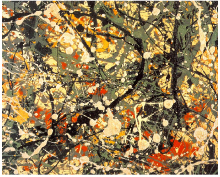Looking back at Web 2006 from 2025


The Web became more active in the first decade of the 21st century, adding billions of text messengers, searchers and surfers, and millions of bloggers, videographers, podcasters added their expressive output to the global digital archive, the long tail getting longer but not bushier as the head of the tail sought to consolidate and capture more attention. Instead of page views, HMQUs (Hours per Month per Qualified User) became the core metric of success. Scholars, pundits and framers of everything Web grappled with defining the evolutionary shifts in Web usage and technologies, settling on a simple versioning schema, with the latter half of the decade labeled 2.0.
The early years of the 21st century Internet also set the stage for the shift from the one-way to the two-way, bidirectional Web, which associated symptoms of bipolar disorder, bursts of energy around themes, topics, events and depressive lulls as signals are crossed, increasing global conflict and marginalization at the edges of the Net. Nouns were replaced by verbs, signifying the active nature of the Web engagement--to Google, Flickr, Twitter, Sling, Ping etc.